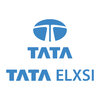Filter interviews by
Cyient Design Engineer Interview Questions and Answers
10 Interview questions
Plastic material selection is crucial for design engineers due to factors like mechanical properties, cost, environmental impact, and manufacturability.
Consider mechanical properties such as strength, stiffness, impact resistance, and temperature resistance.
Evaluate cost factors including material cost, processing cost, and tooling cost.
Assess environmental impact by looking at recyclability, biodegradability, and...
Plastic defects refer to imperfections in plastic materials that can affect their performance and aesthetics.
Surface defects: Scratches or blemishes on the surface can occur during manufacturing or handling.
Dimensional inaccuracies: Parts may not meet specified dimensions due to mold issues or material shrinkage.
Color inconsistencies: Variations in color can arise from improper mixing of pigments or materials.
Bubb...
Carnot cycle is an idealized thermodynamic cycle that operates between two heat reservoirs. Petrol cycle is a type of internal combustion engine cycle used in petrol engines.
Carnot cycle is a theoretical thermodynamic cycle that consists of four reversible processes: isothermal expansion, adiabatic expansion, isothermal compression, and adiabatic compression.
It is used to analyze the efficiency of heat engines.
Pet...
Different types of beams have various applications in engineering, construction, and architecture.
I-beams are commonly used in construction for beams, columns, and joists.
Hollow structural sections (HSS) beams are used in structural applications where weight is a concern.
Box beams are used in bridge construction for their strength and durability.
Composite beams combine materials like steel and concrete for increas...
Types of projection used in Engineering drawing include orthographic projection, isometric projection, and oblique projection.
Orthographic projection: Shows multiple views of an object from different angles.
Isometric projection: Represents a 3D object in 2D with equal measurements along each axis.
Oblique projection: Displays a 3D object by projecting it onto a 2D plane at an angle.
Resonance is the phenomenon of an object or system vibrating at its natural frequency when exposed to external forces.
Resonance occurs when the frequency of the external force matches the natural frequency of the object or system.
It leads to a significant increase in amplitude and energy of vibrations.
Resonance can occur in various systems such as mechanical, electrical, and acoustic.
Examples include a tuning fork...
Strength of materials machine is used to test the mechanical properties of materials.
Strength of materials machine is used to measure the strength, stiffness, and other mechanical properties of materials.
It applies forces or loads to the material specimen and measures the resulting deformation or response.
The machine can be used to determine the tensile strength, compressive strength, flexural strength, and fatigu...
Considerations for designing plastic products include material selection, manufacturing process, structural integrity, aesthetics, and functionality.
Material selection is crucial for desired properties like strength, flexibility, and durability.
Manufacturing process should be compatible with the chosen plastic material.
Structural integrity must be ensured to withstand intended use and environmental conditions.
Aest...
There are various types of plastics, each with unique properties and uses.
Common types include PET, PVC, HDPE, LDPE, PP, PS, and ABS
Plastics can be categorized as thermosetting or thermoplastic
Each type of plastic has different characteristics such as flexibility, strength, and heat resistance
Low fatigue example in design engineering
Using materials with high fatigue strength
Designing components with smooth transitions to reduce stress concentrations
Implementing proper surface treatments to improve fatigue resistance
Cyient Design Engineer Interview Experiences
27 interviews found
I applied via Campus Placement
(2 Questions)
- Q1. Basic of fea and cae
- Q2. Question from simple components to critical component
General aptitude, problem solving
(4 Questions)
- Q1. Applications for different types of beams
- Ans.
Different types of beams have various applications in engineering, construction, and architecture.
I-beams are commonly used in construction for beams, columns, and joists.
Hollow structural sections (HSS) beams are used in structural applications where weight is a concern.
Box beams are used in bridge construction for their strength and durability.
Composite beams combine materials like steel and concrete for increased st...
- Q2. Elements of stress strain curve
- Ans.
Elements of stress strain curve include yield point, ultimate tensile strength, and fracture point.
Yield point is the point on the curve where the material begins to deform plastically.
Ultimate tensile strength is the maximum stress a material can withstand before breaking.
Fracture point is the point at which the material fractures or breaks.
Other elements may include elastic modulus, proportional limit, and strain har...
- Q3. Drawing questions about views
- Q4. General questions on GD and T
(3 Questions)
- Q1. Questions about yourself
- Q2. Situation oriented questions and hypothetical question
- Q3. Mainly questions from resume
(1 Question)
- Q1. Basic engineering questions and mostly the questions are based on your work experience
(1 Question)
- Q1. Salary nigotiation
I applied via Social media

Basic Aptitude Questions
(2 Questions)
- Q1. Mechanical Questions
- Q2. Basic Som related to technica
(2 Questions)
- Q1. Technical interview round
- Q2. Asking about your fav subject questions
Interview Preparation Tips
Medium to tough level
(3 Questions)
- Q1. General mechanical engineering
- Q2. Design engineering related subjects
- Q3. Strength of materials machine
- Ans.
Strength of materials machine is used to test the mechanical properties of materials.
Strength of materials machine is used to measure the strength, stiffness, and other mechanical properties of materials.
It applies forces or loads to the material specimen and measures the resulting deformation or response.
The machine can be used to determine the tensile strength, compressive strength, flexural strength, and fatigue str...
(1 Question)
- Q1. Normal HR questions
I applied via Naukri.com and was interviewed in Oct 2023. There were 3 interview rounds.

(5 Questions)
- Q1. Plastic defects?
- Ans. Sink Marks Burn Marks Weld Lines Warpage Short Filling Flashes Air Bubbles Shrinkage
- Q2. Plastic products design consideration?
- Ans.
Considerations for designing plastic products include material selection, manufacturing process, structural integrity, aesthetics, and functionality.
Material selection is crucial for desired properties like strength, flexibility, and durability.
Manufacturing process should be compatible with the chosen plastic material.
Structural integrity must be ensured to withstand intended use and environmental conditions.
Aesthetic...
- Q3. Types of plastic
- Ans.
There are various types of plastics, each with unique properties and uses.
Common types include PET, PVC, HDPE, LDPE, PP, PS, and ABS
Plastics can be categorized as thermosetting or thermoplastic
Each type of plastic has different characteristics such as flexibility, strength, and heat resistance
- Q4. How to Control plastic defects?
- Ans.
Plastic defects can be controlled through proper material selection, process optimization, and quality control measures.
Selecting the right type of plastic material for the specific application can help prevent defects.
Optimizing the manufacturing process parameters such as temperature, pressure, and cooling time can reduce defects.
Implementing quality control measures like regular inspections and testing can help iden...
- Q5. Choosing of plastic material consideration?
- Ans.
Plastic material selection is crucial for design engineers due to factors like mechanical properties, cost, environmental impact, and manufacturability.
Consider mechanical properties such as strength, stiffness, impact resistance, and temperature resistance.
Evaluate cost factors including material cost, processing cost, and tooling cost.
Assess environmental impact by looking at recyclability, biodegradability, and sust...
(1 Question)
- Q1. Create a 3d model?
- Ans.
I would create a 3D model using CAD software to visually represent a design concept or product.
Start by sketching out the design concept on paper
Use CAD software like SolidWorks or AutoCAD to create the 3D model
Add dimensions, materials, and textures to the model for accuracy
Review and refine the model based on feedback
Export the model in a file format suitable for presentation or manufacturing, such as STL or STEP
Interview Preparation Tips
- Plastic Product Design
- Injection Moulding
- Parametric modelling
Tool Test 1hour on ug nx software create 3d model with the help of parametric modelling?
My tool test date is 28/11/23
Any information pls mail.
I applied via Campus Placement and was interviewed in Sep 2023. There were 4 interview rounds.

Refer agrawal book for aptitude
(3 Questions)
- Q1. Sfd & bmd questions
- Q2. Low fatigue example
- Ans.
Low fatigue example in design engineering
Using materials with high fatigue strength
Designing components with smooth transitions to reduce stress concentrations
Implementing proper surface treatments to improve fatigue resistance
- Q3. Basic thermodynics
(1 Question)
- Q1. Tell me about yourself
- Ans.
I am a passionate Design Engineer with a strong background in mechanical design and a keen interest in innovative solutions.
Graduated with a degree in Mechanical Engineering from XYZ University, where I developed a solid foundation in design principles.
Worked at ABC Company, where I led a team to redesign a product that improved efficiency by 30%.
Proficient in CAD software like SolidWorks and AutoCAD, having completed ...
Interview Preparation Tips
(1 Question)
- Q1. Parametric and non parametric modelling differences.
- Ans.
Parametric modelling uses parameters to define geometry, while non-parametric modelling does not rely on parameters.
Parametric modelling allows for easy editing and updating of designs by changing parameters.
Non-parametric modelling is more flexible and allows for more artistic freedom in design.
Parametric modelling is commonly used in CAD software like SolidWorks, while non-parametric modelling is often used in sculpt...
Interview Preparation Tips
Skills evaluated in this interview

(1 Question)
- Q1. Asked regarding my previous experience and based on that interview also they ask questions re. creo windchill and creo view as it is required if you are going to support the client who uses these software...
(1 Question)
- Q1. It is more related to your salary in cyient everything depends on your technical and cad test
I applied via Approached by Company and was interviewed in Feb 2023. There were 3 interview rounds.

In that test aptitude like ratios, percentages, Profit and loss, and logical verbal and reasonings. Some Mechanical engineering fundamentals also asked
(2 Questions)
- Q1. All mechanical engineering fundamentals
- Q2. Plastic Design, gd&t
Interview Preparation Tips
Top trending discussions






Cyient Interview FAQs
The duration of Cyient Design Engineer interview process can vary, but typically it takes about less than 2 weeks to complete.
Tell us how to improve this page.
Cyient Interviews By Designations
- Cyient Design Engineer Interview Questions
- Cyient Design Specialist Interview Questions
- Cyient Embedded Software Engineer Interview Questions
- Cyient GIS Engineer Interview Questions
- Cyient Software Engineer Interview Questions
- Cyient Technical Writer Interview Questions
- Cyient Telecom Engineer Interview Questions
- Cyient Software Developer Interview Questions
- Show more
Interview Questions for Popular Designations
Overall Interview Experience Rating
based on 30 interview experiences
Difficulty level
Duration
Design Engineer Interview Questions from Similar Companies
Cyient Design Engineer Reviews and Ratings
based on 300 reviews
Rating in categories
|
Design Specialist
2.2k
salaries
| ₹1.8 L/yr - ₹5 L/yr |
|
Design Engineer
1.7k
salaries
| ₹3.4 L/yr - ₹11.1 L/yr |
|
Software Engineer
1.2k
salaries
| ₹4.3 L/yr - ₹12.1 L/yr |
|
GIS Engineer
1k
salaries
| ₹1.8 L/yr - ₹4.8 L/yr |
|
Senior Design Engineer
859
salaries
| ₹7.8 L/yr - ₹13.3 L/yr |

LTIMindtree

DXC Technology

Mphasis

EXL Service
- Home >
- Interviews >
- Cyient Interview Questions
















